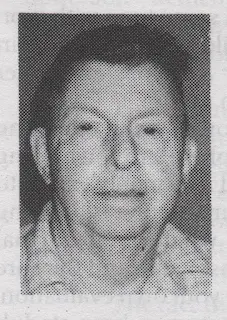Second, Grote Reber's mother was also the teacher of Edwin Hubble. Hubble was the guy who discovered that there were OTHER GALAXIES in the universe, and that they were all moving away from each other. That was a BIG discovery! Later, Grote's mom also had her son in her class. Both students were from Wheaton, Illinois.
Lest there be any doubt about Grote's dedication to radio, consider the following. (Much of the following comes from Wikipedia. https://en.wikipedia.org/wiki/Grote_Reber)
When he learned of Karl Jansky's work in 1933,[5][6][7] Grote Reber decided this was the field he wanted to work in, and applied to Bell Labs, where Jansky was working.
Pioneer of Radio astronomy

In the summer of 1937, Reber decided to build his own radio telescope in his back yard in Wheaton, Illinois. Reber's radio telescope was considerably more advanced than Jansky's, and consisted of a parabolic sheet metal dish 9 meters in diameter, focusing to a radio receiver 8 meters above the dish. The entire assembly was mounted on a tilting stand, allowing it to be pointed in various directions, though not turned. The telescope was completed in September 1937.[8][9]
Here is a really great article from Sky and Telescope magazine (July 1988) about Reber's homebrew radio telescope:
http://jump.cv.nrao.edu/dbtw-wpd/Textbase/Documents/grncr071988a.pdf
He was limited by the size of locally available 2X4 lumber. Neighbors thought he was trying to control the weather or to bring down enemy aircraft. Between Wheaton and the NRAO site in West Virginia, Reber's telescope spent some time at the National Bureau of Standards site in Sterling, Virginia. I was in Sterling just yesterday. I wonder if there is a plaque or something noting the telesccope's stay in that town. I note that at age 15, Reber had built a ham radio transceiver.
AND THEN HE MOVED TO TASMANIA
He did this because of propagation and low noise conditions. (This reminds me of how we sometimes said that very few people have actually said the words, "And then we moved to the Azores.")
Starting in 1951, he received generous support from the Research Corporation in New York, and moved to Hawaii.[12] In the 1950s, he wanted to return to active studies but much of the field was already filled with very large and expensive instruments. Instead he turned to a field that was being largely ignored, that of medium frequency (hectometre) radio signals in the 0.5–3 MHz range, around the AM broadcast bands. However, signals with frequencies below 30 MHz are reflected by an ionized layer in the Earth's atmosphere called the ionosphere. In 1954, Reber moved to Tasmania,[12] the southernmost state of Australia, where he worked with Bill Ellis at the University of Tasmania.[13] There, on very cold, long, winter nights the ionosphere would, after many hours shielded from the Sun's radiation by the bulk of the Earth, 'quieten' and de-ionize, allowing the longer radio waves into his antenna array. Reber described this as being a "fortuitous situation". Tasmania also offered low levels of man-made radio noise, which permitted reception of the faint signals from outer space.
His Homebrew House in Tasmania
In the 1960s, he had an array of dipoles set up on the sheep grazing property of Dennistoun, about 7.5 km (5 miles) northeast of the town of Bothwell, Tasmania, where he lived in a house of his own design and construction he decided to build after he purchased a job lot of coach bolts at a local auction. He imported 4x8 douglas fir beams directly from a sawmill in Oregon, and then high technology double glazed window panes, also from the US. The bolts held the house together. The window panes formed a north facing passive solar wall, heating mat black painted, dimpled copper sheets, from which the warmed air rose by convection. The interior walls were lined with reflective rippled aluminium foil. The house was so well thermally insulated that the oven in the kitchen was nearly unusable because the heat from it, unable to escape, would raise the temperature of the room to over 50 °C (120 °F). His house was never completely finished. It was meant to have a passive heat storage device, in the form of a thermally insulated pit full of dolerite rocks, underneath, but although his mind was sharp, his body started to fail him in his later years, and he was never able to move the rocks. He was fascinated by mirrors and had at least one in every room.
To Canada -- And a Rejection of the Big Bang
The same July 1988 issue of Sky and Telescope magazine has a good historical vignette of Reber, with a focus on his actvities in Canada late in life (click on the image below). Reber had big doubts about the big bang. Unfortunately this seemed to spill over into scorn and ridicule for those who -- well -- believed in the big bang. We see this at the end of the article. Oh well, even great people sometimes get cranky.
Three cheers for Grote Reber.





























